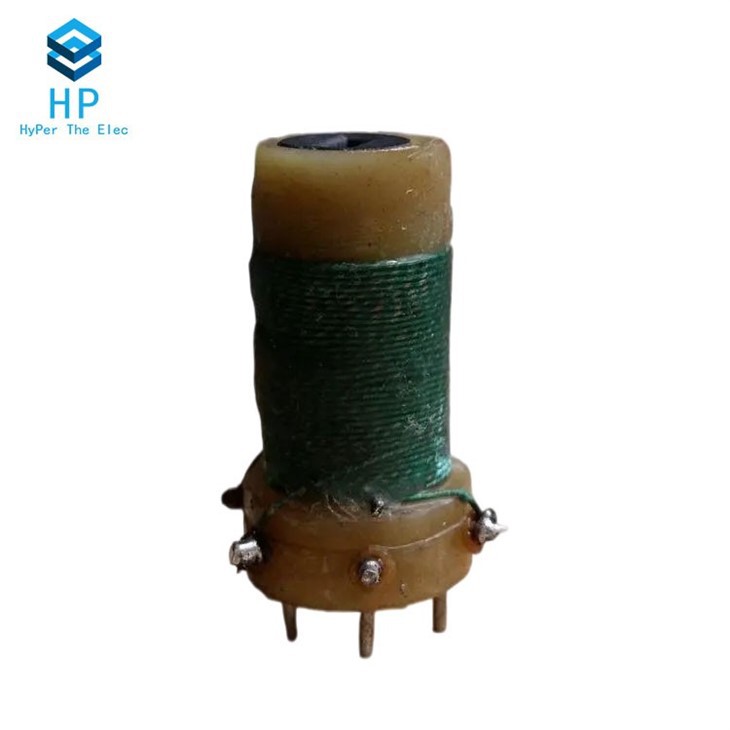Hey there! As a supplier of Trap Coils, I often get asked if these nifty little devices can be used in a lighting circuit. Well, let's dive right into it and find out!
First off, what the heck is a Trap Coil? A Trap Coil, as you can check out Trap Coil, is a type of fixed inductance coil. It's designed to block or "trap" certain frequencies while allowing others to pass through. It's like a bouncer at a club, deciding who gets in and who doesn't.
Now, when it comes to lighting circuits, we need to understand the basic requirements. Lighting circuits are all about providing a stable and consistent flow of electricity to power up those bulbs. Most lighting circuits operate on alternating current (AC), and the key is to make sure the voltage and current levels are just right.
One of the main things that can mess up a lighting circuit is electrical interference. This can come from all sorts of sources, like nearby electronic devices, power surges, or even radio frequency interference (RFI). That's where the Trap Coil can potentially come in handy.
Imagine you have a fancy lighting setup in a room full of other electronics. The RFI from those devices can cause the lights to flicker or make a buzzing sound. A Trap Coil can be installed in the lighting circuit to filter out the unwanted frequencies. It acts as a shield, protecting the lighting circuit from the outside interference.
Let's talk about how it actually works. A Trap Coil has a specific inductance value, which determines the frequencies it will block. When an alternating current passes through the coil, it creates a magnetic field. This magnetic field opposes any changes in the current, and that's how it filters out the unwanted frequencies.
For example, if there's a high - frequency RFI in the circuit, the Trap Coil will resist the flow of that high - frequency current. The result is that only the desired frequencies, the ones needed to power the lights properly, are allowed to pass through.
But it's not all sunshine and rainbows. There are some limitations to using a Trap Coil in a lighting circuit. One of the main issues is the power rating. You need to make sure that the Trap Coil can handle the amount of power that the lighting circuit is drawing. If the coil is under - rated, it can overheat and even burn out, which is definitely not what you want.
Another thing to consider is the cost. Trap Coils can be a bit pricey, especially if you need a high - quality one with a specific inductance value. So, you need to weigh the cost against the benefits. If the lighting circuit is in a noisy environment and the interference is causing significant problems, then the investment in a Trap Coil might be worth it.
Now, let's compare Trap Coils with other types of coils. There's the Oscillating Coil. An Oscillating Coil is designed to create oscillations in an electrical circuit. It's often used in things like radio transmitters and receivers. While it can also deal with electrical frequencies, its main purpose is not to filter interference in a lighting circuit.


Then there's the Resonant Coil. A Resonant Coil has a specific resonant frequency at which it can store and transfer energy efficiently. It's commonly used in applications like wireless power transfer. Again, it's not typically used for the same purpose as a Trap Coil in a lighting circuit.
In terms of installation, it's not overly complicated, but it does require some basic electrical knowledge. You need to know how to connect the Trap Coil in series or parallel with the lighting circuit, depending on the specific requirements. If you're not confident doing it yourself, it's always a good idea to hire a professional electrician.
So, can a Trap Coil be used in a lighting circuit? The answer is yes, it can. It can be a great solution for dealing with electrical interference and ensuring a stable and reliable lighting system. However, you need to consider the power rating, cost, and installation requirements.
If you're interested in learning more about Trap Coils or think they might be a good fit for your lighting circuit, don't hesitate to reach out. We're here to help you make the right choice for your electrical needs. Whether you're a homeowner looking to fix some flickering lights or a professional electrician working on a large - scale project, we've got the expertise and the products to support you.
Let's get your lighting circuit running smoothly and free from interference. Contact us today to start the conversation about purchasing Trap Coils for your specific application.
References
- Electrical Engineering textbooks on circuit theory and electromagnetic interference.
- Industry reports on the use of inductive components in electrical circuits.




